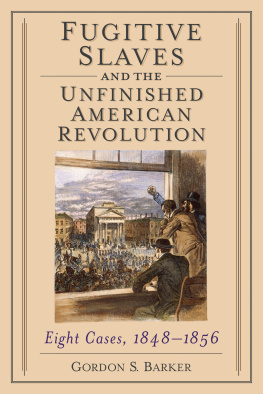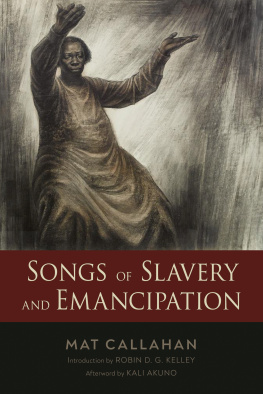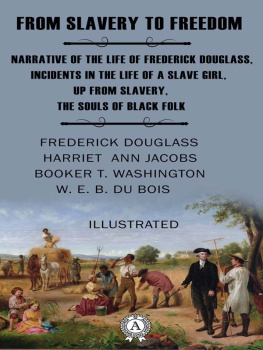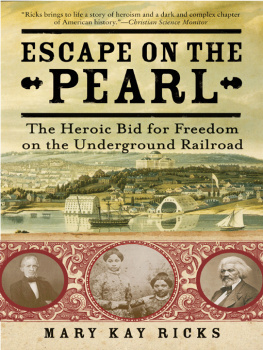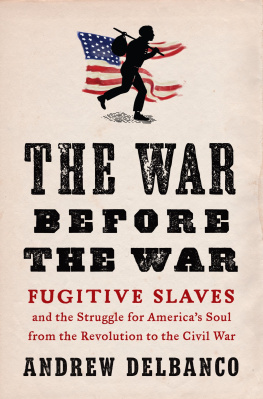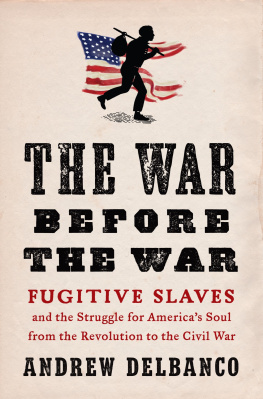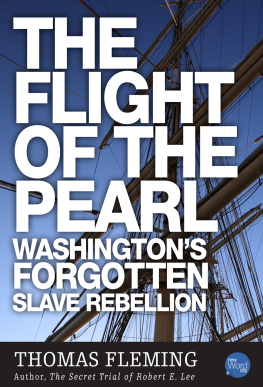The Pearl
2005 Josephine F. Pacheco
All rights reserved
Set in Monotype Bulmer, Engravers Bold, and Kunstler Medium
by Tseng Information Systems, Inc.
Manufactured in the United States of America
The paper in this book meets the guidelines for permanence and durability of the Committee on Production Guidelines for Book Longevity of the Council on Library Resources.
Library of Congress Cataloging-in-Publication Data
Pacheco, Josephine F.
The Pearl/afailedslave escape on the Potomac / by Josephine F.
Pacheco.
p. cm.
Includes bibliographical references and index.
ISBN 0-8078-2918-8 (cloth : alk. paper)
1. Fugitive slavesWashington RegionHistory19th century. 2. Antislavery movementsWashington RegionHistory19th century. 3. Pearl (Schooner) I. Title.
E445.D6P33 2005
973.7'115dc22 2004013917
09 08 07 06 05 5 4 3 2 1
In memory of
HALLIE BEAZLEY FENNELL
and
ROBERT HENRY FENNELL
Contents
Illustrations
United States Slave Trade. 1830
A Black Servant
Human Flesh at Auction
Daniel Drayton
Joshua R. Giddings
Amelia (Milly) Edmondson
Elizabeth and John Brent
Mary and Emily Edmondson
John Gorham Palfrey
A slave pen in Alexandria, Virginia
Fugitive Slave Law Convention, 1850
Acknowledgments
I am grateful to the many people who provided assistance and encouragement when I was writing this book about runaway slaves.
Ralph Pacheco demonstrated skill and patience in keeping a computer functioning, editing chapters, and correcting errors. Anita Pacheco, Ginny Mark, and Peter Pacheco were editors of great skill and unbelievable patience. I am very grateful to them.
Mona Dearborn read the Alexandria Gazette and provided valuable items about slave trading. Ruth Kerns, Linda Ruggles, and Mary Martha Thomas read much of the manuscript and offered especially useful suggestions. Thomas Carr rendered valuable service as a researcher. Dr. Marion B. W. Holmes provided an important quotation from her grandmothers remembrance of Frederick Douglass. Mr. and Mrs. Paul Johnson gave me the opportunity to meet members of the Edmondson family, who spell their name with one d. Mrs. Lonise Robinson shared her knowledge of Asbury Church and generously provided me with a copy of the history of that historic institution. Muriel Parry, a true fount of wisdom, helped with information about matters nautical. Catherine M. Hanchett was very helpful in answering questions. I am grateful to the people in New Bedford, Massachusetts, who remain interested in Daniel Drayton.
William Creech and Robert Ellis provided valuable assistance in searching the records of the National Archives. Jeffrey Malick of the Clerks Office of Montgomery County, Maryland, went to a great deal of trouble to provide important information about land holdings in the county. Several people did research on my behalf in several libraries and archives: Barbara Steadman, Susan Moutoux, Kevin Smead, Steve Saltzgiver, and Larry Hunter. I am grateful to them for their hard work. I also wish to thank Abby Gilbert for searching records in the federal government, especially the Treasury Department.
I owe a debt of gratitude to many librarians and archivists; through their skill and knowledge they open up treasures for researchers that otherwise would never be available. I am grateful to the Lovely Lane Methodist Museum in Baltimore, Maryland; the Oberlin College Archives in Oberlin, Ohio; the Massachusetts Historical Society in Boston; the Library of Virginia in Richmond; Houghton Library at Harvard University in Cambridge, Massachusetts; the Moorland-Spingarn Research Center at Howard University in Washington, D.C.; Alderman Library at the University of Virginia in Charlottesville; and the New Hampshire Historical Society in Concord.
The greatest pleasure in doing research is to work in the Library of Congress, certainly the finest research library in the world. It is not said often enough that the research librarians at the Library of Congress are the best of their profession. I am more deeply indebted to them than I could ever say. I have been helped immeasurably by librarians in the Periodicals Division, especially by Georgia Higley; the Prints and Photographs Division; the Manuscript Division; the Rare Book and Special Collections Division; the Geography and Map Division; the Law Library, especially by the late David Rabasca; and the Local History and Genealogy Reading Room, especially by Virginia Wood. My greatest debt is to the wonderful people in the Humanities and Social Sciences Division, who have fought the battle of the stacks, pointed me in the right direction to find material, saved me from many errors, preserved the old card catalog and the notations of generations of librarians, and provided a shelf for books currently in use (bless Bruce Martin!). Over the years they never made me feel that I was a burden, and I am blessed to have known them. I am grateful to every member of the division, but the book could not have been written without the assistance of Marilyn Parr and Thomas Mann, who pointed out errors, suggested sources, provided encouragement, and in every way served as models of what a research librarian should be. Gratitude is not an adequate response to the help they have given me, but that they have in abundance.
The Pearl
Introduction
In the spring of 1848 watermen Daniel Drayton and Edward Sayres undertook to lead one of the largest slave escape attempts in the United States. The two men planned to use a schooner, the Pearl, to carry seventy-sixrunaway slaves from Washington, D.C., to freedom in Pennsylvania and points north. They went down the Potomac River and expected to sail up the Chesapeake Bay, but stormy weather frustrated their project. When they anchored to wait for the storm to abate, their pursuers overtook them and returned Drayton, Sayres, and the fugitives to Washington. The two seamen ended up in jail and most of the runaways in the hands of slave dealers, awaiting sale to owners in the Deep South.
In the pages that follow, the events surrounding the thwarted flight will lead to an examination of slavery and the slave trade in the District of Columbia, the religious and political climate in the United States in the middle of the nineteenth century, and the sentiments and actions of antislavery and proslavery activists. The attempted escape is revealing about Americans both black and white, slave and free, powerful and powerless; it was significant in the story of American slavery and antislavery.
Slaves ran away wherever slavery existed. Owners knew that losing a slave because of flight was a hazard of slavery. According to a former bondman, The white folks down south dont seem to sleep much, nights. They are watching for runaways. A fugitive from Maryland declared that no power in this world will arrest the exodus of the slaves
Although they could not prevent flight, slave masters let their human property know that terrible punishment awaited them if they were caught or even if they returned of their own volition. Decisions about the punishment of runaways were left to their owners; the government did not interfere because punishment was a private matter between a master and his property. Governments stepped in if there were indications that someone had enticed a bondman or woman to flee, for that was a very serious offense, as this account will show.
In the years following the American Revolution, northern states either ended slavery or made plans to do so; southern states did not. The men that met in Philadelphia in 1787 to write our Constitution accepted both the reality of human bondage and the accompanying reality of slave flight. Consequently, Article 4, Section 2, paragraph 3 of the United States Constitution provided that a person held to service or labor in one state, on fleeing to another, shall be delivered up on claim of the party to whom such service or labor may be due.


